The Gifts of the Snag Forests
Many species live in mortal fear of green forests because they depend on the snag forests and down wood created by high severity blazes.
The snag forests that result from high-severity blazes are a unique and critical habitat for numerous species. Photo George Wuerthner
I was backpacking with a friend up the Yellowstone River in the Teton Wilderness of Wyoming a couple of years ago. At various times, we passed through areas that had burned severely, likely in the 1988 fires. Since that blaze, many snags had fallen over, and nearly every log we encountered along the trail had been torn up by grizzly bears seeking grubs and ants.
I kept thinking to myself as I cautionally surveyed the trail ahead for a live bear; how many people seeing the snags from the 88 fires would think that years later, it would be a smorgasbord for bears? Yet providing a food cart for grizzly bears is only one of the gifts of the high-severity fires and the snag forest they create.
.
Logs torn apart by grizzly bear to obtain grubs. Photo George Wuerthner
Across the West, politicians, agency personnel, and far too many conservation organizations mistakenly categorize high-severity wildfires (where the majority of trees are killed) as “catastrophic” and a “loss.” Government policy is generally focused on precluding and eliminating high-severity blazes, even though these fires are largely climate/weather-driven events that are impossible to stop.
What tends to burn in wildfires are the “fine fuels” like grasses, shrubs, small branches, and the like as seen here in the Bootleg Blaze of southern Oregon. The boles of trees tend to be resistant to flames and survive as snag forests. Photo George Wuerthner
Wildfires tend to burn the fine fuels such as needles, cones, shrubs, and grasses. Tree boles, by contrast, tend to be resistant to fires, which is why you get snag forests after a high-severity blaze.
Fireweed beneath snags along Fourth of July Creek, Boulder White Cloud Mountains, Idaho. Photo George Wuerthner
However, from an ecological perspective, the snag forests resulting from such blazes are among the plant community’s most biologically diverse and important ecological stages.
Many more species depend on the dead trees, the sudden transformation of landscapes, and the resulting dead wood resulting from such blazes than in green forests.
It is not an exaggeration to suggest that many species around the West live in fear of green forests.
The even-aged tree regeneration seen here in along Tumalo Creek Oregon is the aftermath of a stand replacement high-severity fire. . Photo George Wuerthner
While such sudden changes in a forest from green to blackened snags can be jarring to many people, an ecological viewpoint sees such forests as a gift.
The surge in wildflowers after a high-severity burn attracts an array of insects including bees and butterflies. Photo George Wuerthner
For instance, after a major wildfire, the removal of competing vegetation and abundant light results in a huge surge in wildflowers. This, in turn, affects the abundance of bees and butterflies. The highest density and diversity of native bees are found in severely burnt forests, partly because many species nest in the down wood resulting from such blazes.
Wood-boring beetles and other insects are attracted to the snags. Birds flock to the burnt forest to feast on these insects. Like the black-backed woodpecker, some birds are almost never found anywhere except in burnt forests.
Black-backed woodpecker is dependent on snag forests for their abundance. Photo USFS
Woodpeckers are not the only bird species that tend to be more abundant in snag forests. Bluebirds, robins, red crossbills, Clark’s nutcrackers, house wren, and tree swallows are just a few species attracted to burnt forests.
As many hunters know, in the aftermath of a high-severity fire, there is often a flush of new growth of shrubs like willow and aspen, a favorite food of elk, moose, and deer.
A weasel on a down log searches for prey. Photo George Wuerthner
When the snags fall over, they provide the habitat for voles, mice, and other small mammals, which in turn helps support small predators like weasel and marten.
Snags that fall into river create habitat for aquatic insects and fish as seen here in Lewis River, Yellowstone NP, Wyoming. Photo George Wuerthner
But it doesn’t end with land species. Down logs are among the most essential habitat for aquatic ecosystems. There are more aquatic insects, which in turn support fish like trout and salmon. The physical presence of logs slows water, creating the holding habitat for fish and reducing streambanks’ erosion.
An essential aspect of down wood in streams is the sporadic nature of such events. Since high-severity blazes tend to occur decades to centuries apart, the input of downwood is episodic, and the contribution of wildfire-created downwood may only happen once every century or two.
Furthermore, the source of mortality influences how trees rots. Charred wood from wildfire is resistant to many bacteria, fungi and other agents of decomposition. By contrast trees killed by bark beetles or drought decompose quicker.
Dead trees also store carbon, a crucial factor today in the age of climate warming.
Snags left behind by the 1910 Big Burn still remain a century later along the Idaho-Montana border in the proposed Great Burn Wilderness continue to store carbon. Photo George Wuerthner
Fire-killed trees last longer than trees that die from other mortality sources, and the charcoal and burnt bark tend to rot very slowly, storing carbon sometimes for centuries. This contrasts with salvage logging of burnt trees, which tends to liberate far more carbon in the wood processing than is released due to fires.
It’s not just fauna that benefits from high-severity blazes; some 40% of the lichens in the Pacific Northwest are more common on dead trees, and some species are only found on dead trees—Ditto for mushrooms. One mushroom authority told me that approximately half of the mushroom species found in Montana are most common in burnt forests.
High-severity blazes also set back ecological succession, recreating early successional habitat dominated by shrubs and grasses that many species find suitable.
Aspen regeneration after wildfire, West Boulder River, Absaroka Beartooth Wilderness, Montana. Photo George Wuerthner
Unlike “old-growth forests,” which can last centuries if undisturbed, the habitat created by high-severity blazes is transient, typically lasting no more than a half-century before succession tends to eliminate this unique habitat quality.
If you like the beauty of the aspen forests seen here in the South San Juan Wilderness of Colorado as well as other plant communities favored by wildfire you are likely enjoying the aftermath of a high-severity fire. Photo George Wuerthner
For those with an ecological eye and sensibility, if you know how to look, the snag forests that high-severity blazes create are magical and full of life. Rather than lifeless, high-severity blazes are a gift of nature and one of the most critical habitats found in our forests.




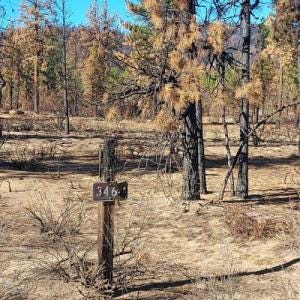
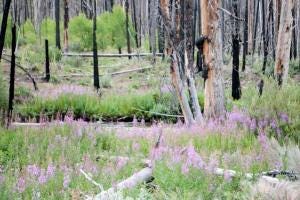
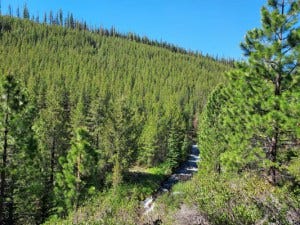
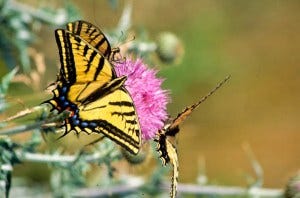
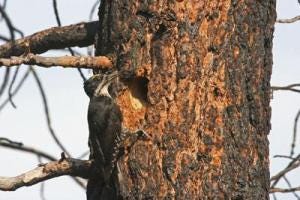

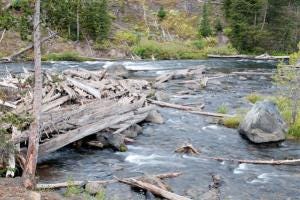
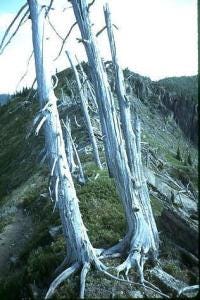
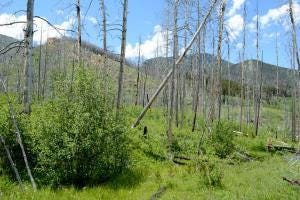

“The Gift of the Snag Forest” was a delightful article; nature’s cycles are sometimes long distance, and demand patient human understanding and education. I wish that many more people had the benefits of tutorials like this. Would that our political leaders dwelt on such thoughts—even well-placed members of the Department of the Interior. Thank you, Mr Wuerthner.
Larry Drummond